Wingspan 8.22 m Introduced 1972 First flight 1971 | Length 16 m Retired 1977 | |
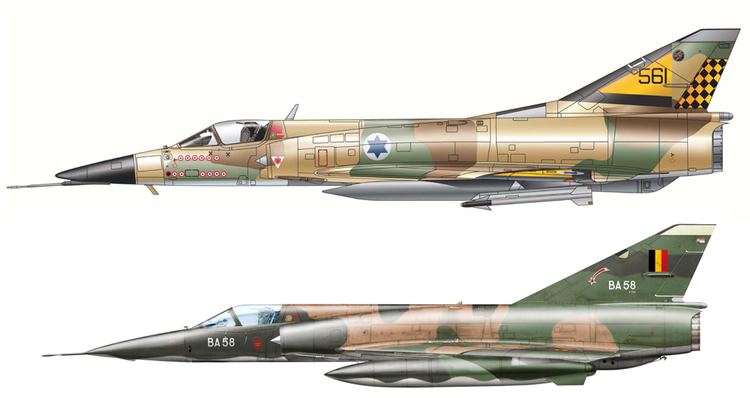 | ||
Manufacturer Israel Aerospace Industries | ||
The Israel Aircraft Industries Nesher (Hebrew: נשר, "Vulture" - often mistranslated as "eagle") is the Israeli version of the Dassault Mirage 5 multi-role fighter aircraft. Most were later sold to the Argentine Air Force as Daggers, and later upgraded as Fingers.
Contents
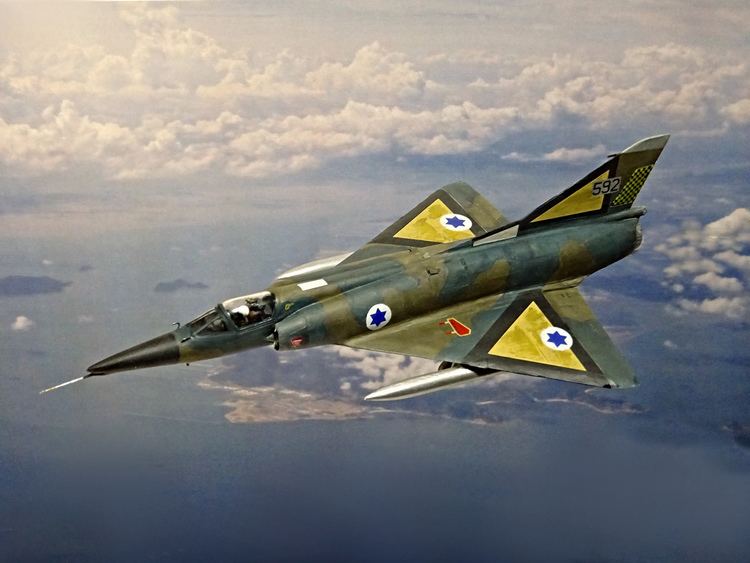
Iai nesher
Design and development
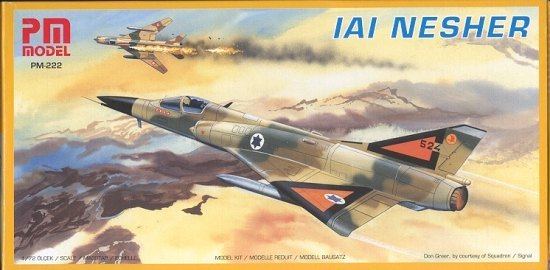
Israel had to replace more than 60 aircraft lost during the Six Day War and the War of Attrition which followed. Before the war, Israel began co-development with Dassault to build the Mirage 5 and it was eventually built by Israel and named Raam in Hebrew (thunder).
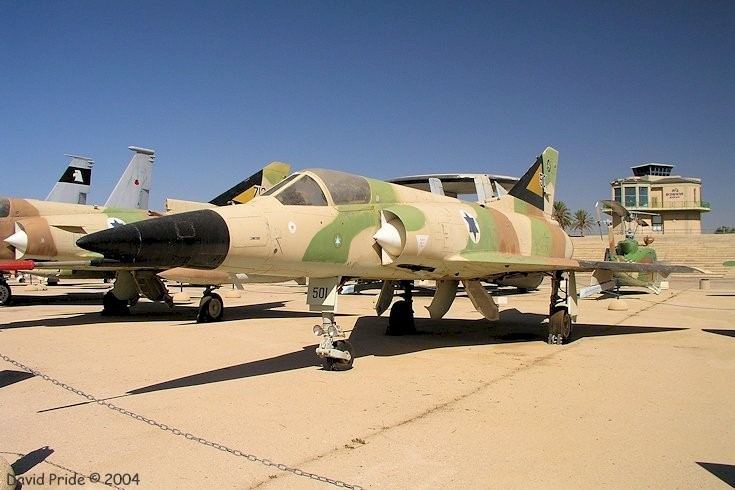
Dassault Aviation had developed the Mirage 5 at the request of the Israelis, who were the main foreign customers of the Mirage III. The Israeli Air Force (IAF) wanted the next version to have less all-weather capability in exchange for improved ordnance carrying capacity and range as the weather in the Middle East is mostly clear.
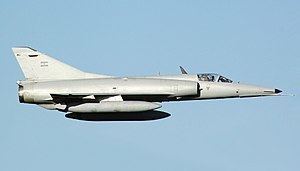
In January 1969, the French government arms embargo on Israel (in response to the 1968 Israeli raid on Lebanon) prevented the first 30 Mirage 5 aircraft (which were already paid for by Israel) plus optional 20 from being delivered and cut off support for the existing Mirage IIICJ fleet.
This was a setback for the Israeli Air Force, who needed the new Mirage to compensate for the losses of the Six Day War and was still using the Mirage IIIC. Israel then decided to produce the (Raam A and B project) airframes as it had the necessary plans, although Israel did not officially obtain a manufacturing license.
Officially, Israel built the aircraft after obtaining a complete set of drawings from France and Atar engine plans came from a Swiss engineer who worked in a plant in Switzerland, where Mirage III aircraft were being produced under licence. However, some sources claim Israel actually received 50 Mirage 5s in crates from the French Air Force (AdA), while the AdA took over the 50 aircraft originally intended for Israel. The Swiss Mirage drawings is supposed to be an only cover-up story, and after Argentina Air Force bought Ex-Israeli Neshers data is available to be almost sure the Neshers were Mirage 5s assembled in Israeli from French made parts and Swiss Atar engines delivered secretely. French made parts were also believed to have been supplied to build the first IAI Kfir, and also supplied to South Africa via Israel.
Production began in 1969 with the first empty airframes with no weapons, electronics, seat, or engine included, delivered directly from Dassault Aviation. The first Raam A was delivered in May, 1971. In November, 1971 the plane was renamed Nesher.
The Neshers' airframe was identical to the Mirage 5, but there was an extensive refitting of Israeli avionics, a Martin-Baker zero-zero ejection seat, and improved provisions for a wider range of AAMs (Air-to-Air Missiles), including the Israeli Shafrir heat-seeking missile. Fifty-one Nesher fighters (Nesher S) and ten Nesher two-seat trainers (Nesher T) were built in all.
The Nesher had simpler avionics than the Mirage IIIC and was slightly less maneuverable. However, it had longer range and bigger payload. The reduced maneuverability did not prevent the Nesher from performing well in air combat during the Yom Kippur War.
Nesher production was phased out from 1974 to make way for an improved Mirage derivative that had been planned in parallel, in which the Atar engine was replaced by an Israeli-built General Electric J79 engine, the engine used on the American Lockheed F-104 Starfighter and McDonnell Douglas F-4 Phantom II fighters. The result was the IAI Kfir.
Israel
51 Nesher fighters and 10 Nesher two-seat trainers were built for the IAF. The first Nesher prototype flew in September 1969, with production deliveries to the IAF beginning in May 1971, ending in February 1974. These aircraft performed well during the 1973 Yom Kippur War, claiming over a hundred kills.
After their service with the IAF had come to an end, many Neshers were refurbished and sold to Argentina as Daggers.
Argentina
The remaining Israeli aircraft were refurbished and exported to the Argentine Air Force in two batches, 26 in 1978 and 13 in 1980, under the name Dagger, comprising 35 Dagger A single-seat fighters and four Dagger B two-seat trainers.
They formed a new unit, 6th Air Group, and were immediately enlisted with the help of the 8th Air Group (Mirage IIIEA) and the Peruvian Air Force, already a user of the Mirage 5, due to the escalating crisis with Chile that year.
During the 1982 Falklands War, they were deployed to the southern naval airbase of Río Grande, Tierra del Fuego, and an airfield in Puerto San Julián and despite the distance to their targets and lack of aerial refueling capability, managed to make 153 sorties against both ground and naval targets on the 45 days of operations. In the last role, they damaged HMS Antrim, Brilliant, Broadsword, Ardent, Arrow and Plymouth. Eleven Daggers were lost in combat (nine by AIM-9L Sidewinders fired from Sea Harriers and two by surface to air missiles).
In the 1979 contract with IAI, the Argentine Air Force stipulated that the Daggers would be equipped with new avionics and HUD systems to take them to the Kfir C.2 (and beyond in some subsystems) standard. The program, named Finger, was underway in 1982 when the Falklands War broke out. With the war over, as some of these systems were made by the British Marconi Electronic Systems, they needed to be replaced after an arms embargo was imposed by the UK. The replacement of such systems took the planes to the final Finger IIIB standard mainly by replacing the British equipment with French-built Thomson-CSF.
Variants
Former
Specifications
General characteristics
Performance
Armament
up to 4200kg of disposable stores
